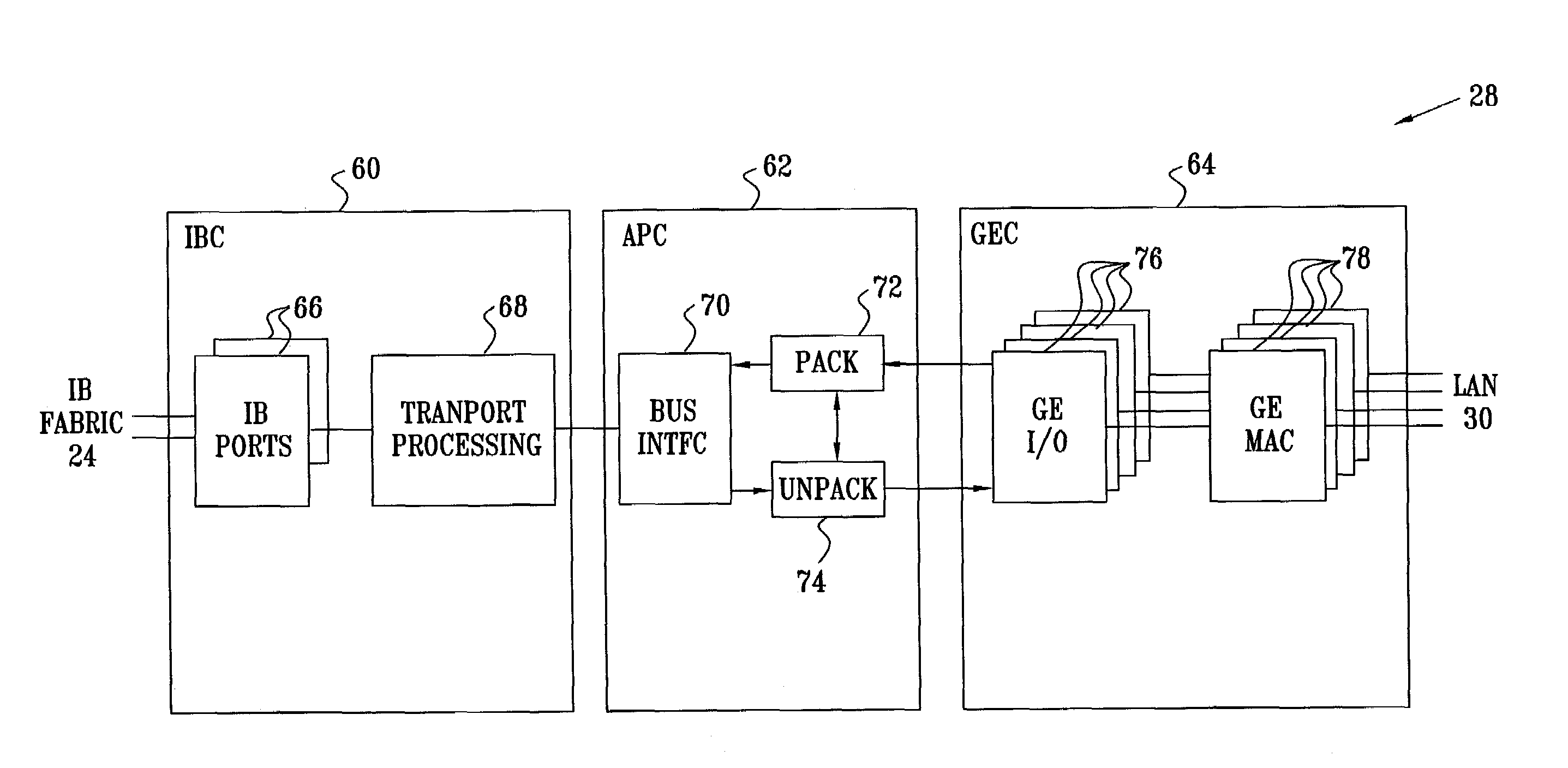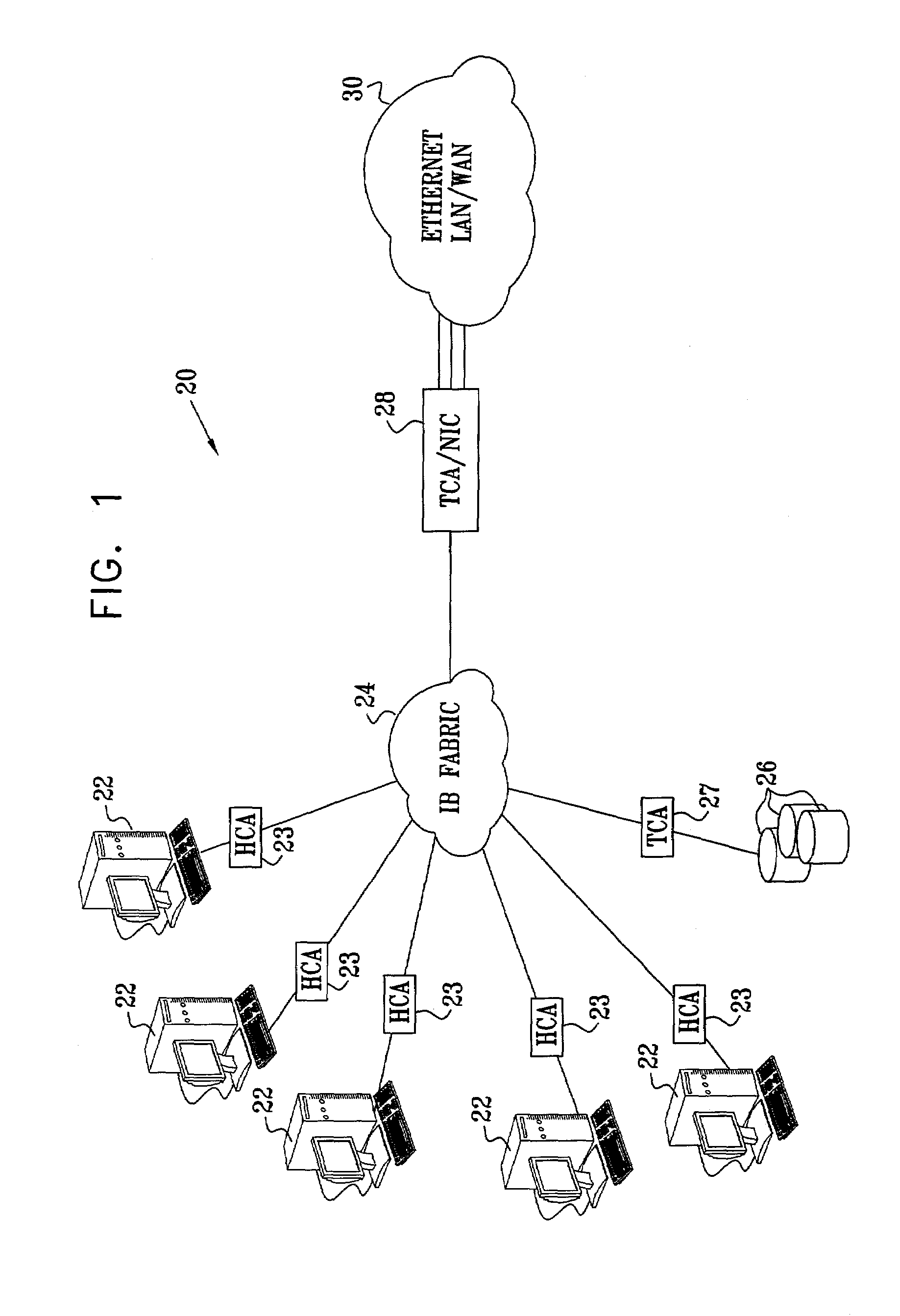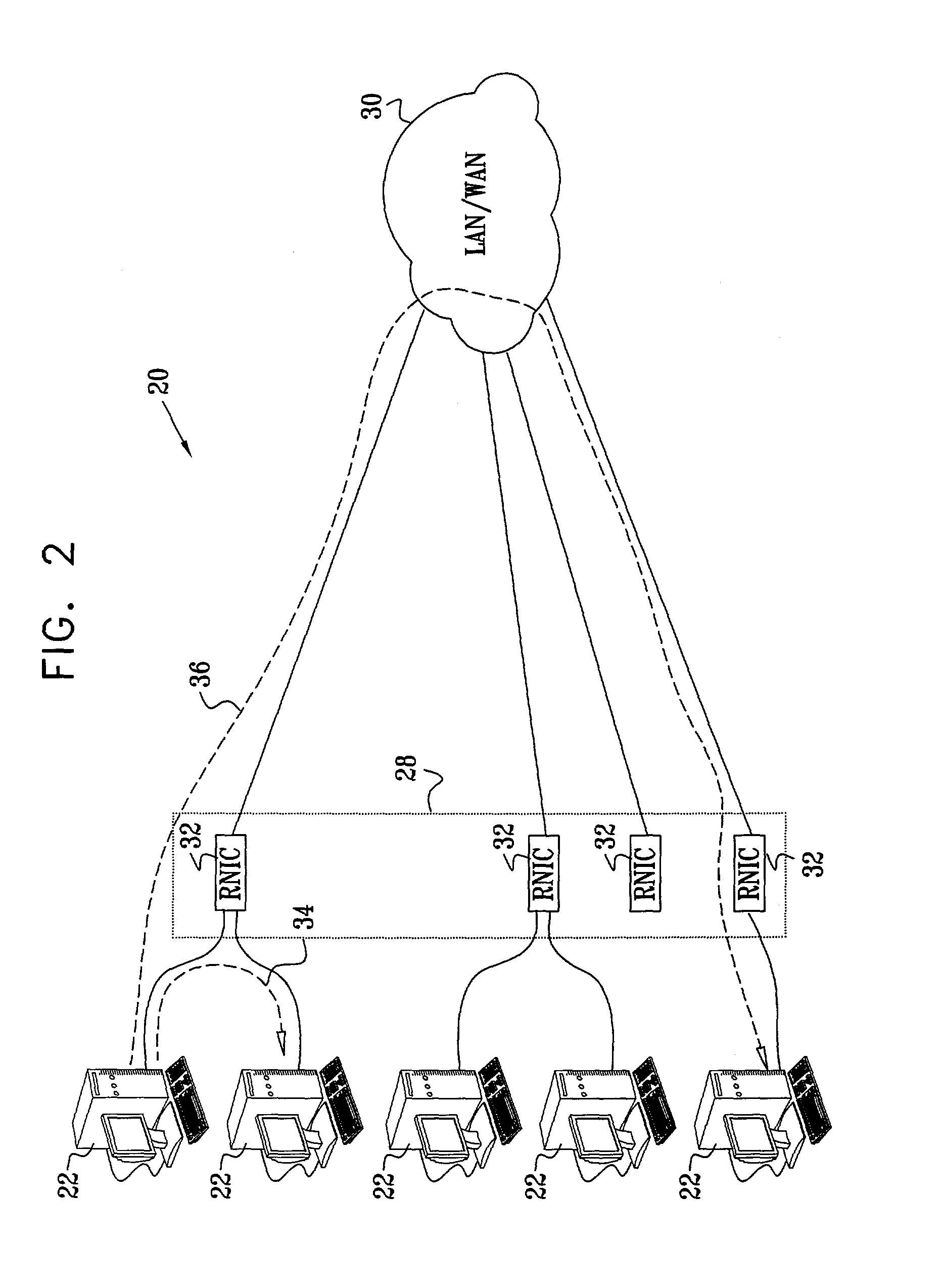Sharing a network interface card among multiple hosts
- Summary
- Abstract
- Description
- Claims
- Application Information
AI Technical Summary
Benefits of technology
Problems solved by technology
Method used
Image
Examples
Embodiment Construction
[0068]FIG. 1 is a block diagram that schematically illustrates a system 20 for connecting hosts 22 via a switch fabric 24 to an external network 30, in accordance with a preferred embodiment of the present invention. Fabric 24 preferably comprises an InfiniBand (IB) fabric, and hosts 22 are connected to the fabric via suitable host channel adapters (HCAs) 23, as described in the above-mentioned IB specification. Fabric 24 enables hosts 22 to access various sorts of shared resources, such as shared storage 26, and a network I / O unit 28 linking the hosts to network 30. The I / O unit comprises a target channel adapter (TCA) for communicating over fabric 24 and a network interface card (NIC) for interfacing with network 30. Since the essential function of the I / O unit is to couple hosts 22 to network 30, it is referred to hereinafter simply as NIC 28. Storage 26 is likewise linked to fabric 24 by another TCA 27.
[0069]Typically, network 30 comprises an Ethernet LAN, preferably operating i...
PUM
 Login to View More
Login to View More Abstract
Description
Claims
Application Information
 Login to View More
Login to View More - R&D
- Intellectual Property
- Life Sciences
- Materials
- Tech Scout
- Unparalleled Data Quality
- Higher Quality Content
- 60% Fewer Hallucinations
Browse by: Latest US Patents, China's latest patents, Technical Efficacy Thesaurus, Application Domain, Technology Topic, Popular Technical Reports.
© 2025 PatSnap. All rights reserved.Legal|Privacy policy|Modern Slavery Act Transparency Statement|Sitemap|About US| Contact US: help@patsnap.com



